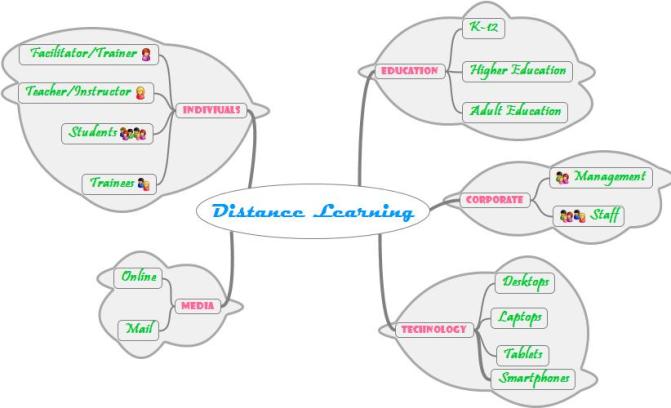My experience with Distance Learning has been very short, but very meaningful; a true learning experience. I never considered Distance Learning as an option for me. The reasons were mostly because of unfounded misconception, resistance to change, adapt and try new ways of learning; basically fear of the unknown. Besides, I was very comfortable with the traditional learning system and I had no real reason to go ahead and try something different, I had the time, had a good job plus several on and off decent paying “gigs”.
Almost every person that like me had doubts about Distance Learning and gave it a chance had a reason that made them change their minds. My reason was family. Now, I saw myself without the luxury of time, the economy affected my income especially, and opportunities were passing me by and as time passed not as frequent. So I had to adjust, sink or swim as they say. I needed to make myself more marketable and for that I need to acquire new skills. The only option was going back to school, but the conventional system was not an option anymore for me. I needed flexibility, and that is why Distance Learning has worked for me.
Based on what I have read this week I can define Distance Learning as the act of actively participating in an academic environment in which all the parties involved (teachers, facilitators, students or trainees) may or may not be all physically present in the same location and/or at the same time by utilizing different channels of communication in order to interact and share ideas or participate in meaningful discussions.
This flexibility is what many point out as one of the reasons why Distance Learning works for them and why it has become so successful and widely accepted over the years. Another reason is that it is very economical. Moller, Foshay and Huett (2008) state that the motivating factors for corporate e-learning are predominantly economic.
The adaptability of DL is another reason why it continues to be so successful. Distance Learning has proven to be capable of adapting to the circumstances; it is manageable, plays along very well with the technologies that are predominant at the moment. Proof of this we can be found by analyzing Distance Learning’s timeline. It dates back to the early 1800’s.
Dr. Simonson in a video interview (Laureate Education, nd.) gives a small synopsis of DL’s timeline. In this video he sums up how Distance Learning or Distance Teaching as he calls it, has progressed over the years. In this interview he points out that it has had more of an impact and had developed more in Europe than here in US. He also points out that this changed drastically in the last decades thanks to the Internet.
This quick jump towards acceptance of Distance Learning as an alternative for learning is due greatly to the fact that access to a computer and to the Internet has increased greatly over last decades. As well as other forms of accessing information, like phones, tablets etc.
I recommend reading the following article, “Planning for Neomillennial Learning Styles” written by Chris Dede in 2005, it goes into great detail of the impact technology is having on higher education; virtual learning is addressed as well as other concepts. Keep in mind that this article was written in 2005, some concepts and ideas are introduced as if they were new or in the works, but are that at the moment being used more frequently than before.
 ___
___
Reference
- Huett, J., Moller, L., Foshay, W., & Coleman, C. (2008). The evolution of distance education: Implications for instructional design on the potential of the web (Part 1: Training and development). TechTrends, 52(3), 70-75.
- Laureate Education (Producer). (n.d.). Distance education: The next generation [Video File]. Retrieved from https://class.waldenu.edu on 5/06/2016.
- Dede, C. (2005). Planning for Neomillennial Learning Styles. Educause Quaterly. Number 1. Retrieved from http://net.educause.edu/ir/library/pdf/eqm0511.pdf on 5/07/2016